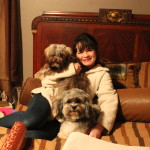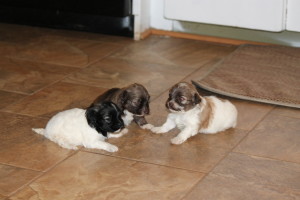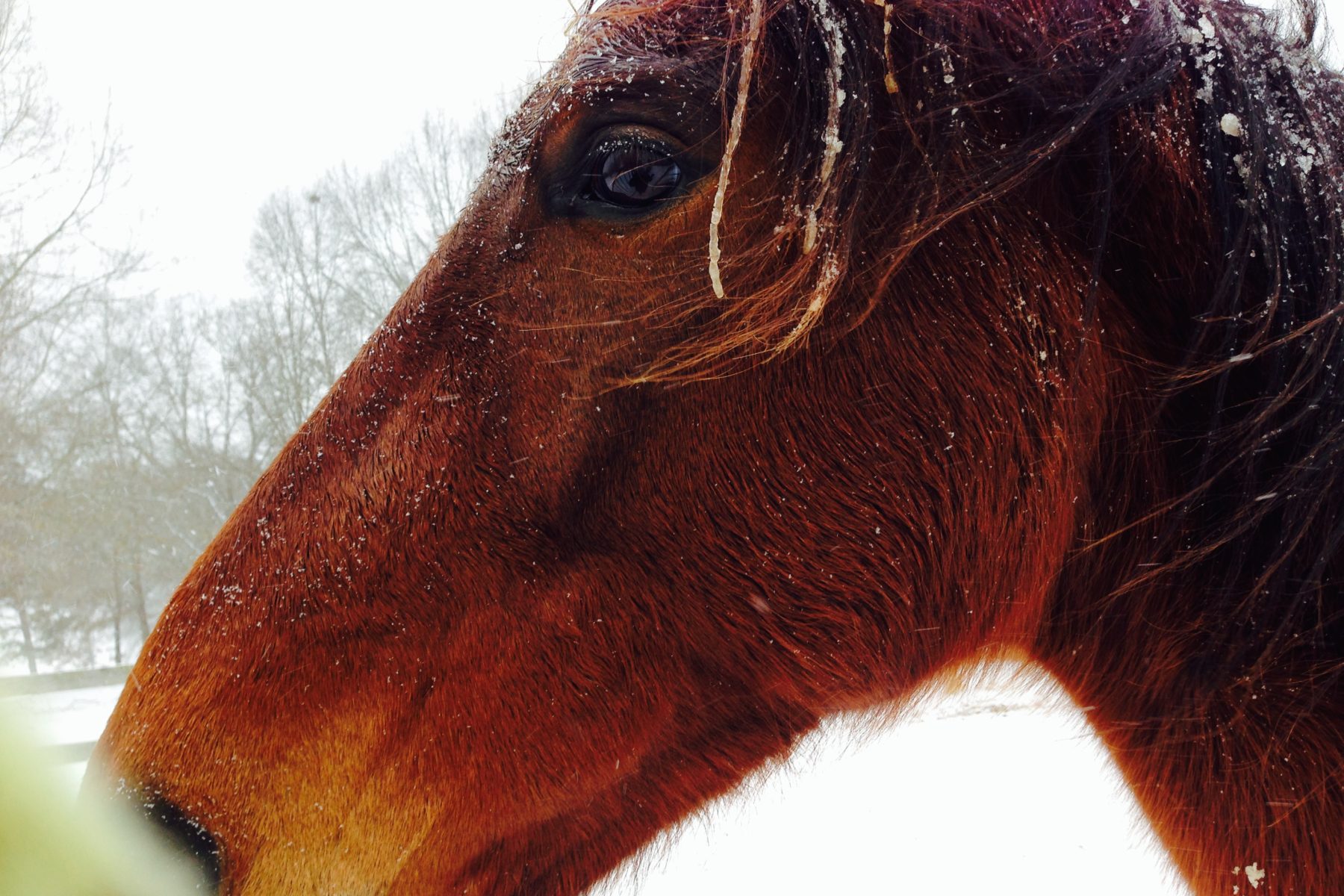The Havanese is part of the Bichon canine family of small breeds which probably originated in the Mediterranean area in pre-Christian times. All Bichons are descended from the same bloodlines that produced the Barbichon (or water spaniel), the Poodle, the Portuguese Water Dog, and others. The Barbichon (Bichon) consists of several distinct breeds, including the Havanese, Maltese, Bichon Frise, Lowchen, Coton de Tulear, and Bolognese.
times. All Bichons are descended from the same bloodlines that produced the Barbichon (or water spaniel), the Poodle, the Portuguese Water Dog, and others. The Barbichon (Bichon) consists of several distinct breeds, including the Havanese, Maltese, Bichon Frise, Lowchen, Coton de Tulear, and Bolognese.
During the days of the Spanish empire, Bichons travelled to Cuba with sea captains who used them as presents for the women of Cuban households. By gaining entry into wealthy Hispanic homes, which were otherwise closed to outsiders, the captains were able to establish lucrative trading relationships with rich Cuban families.
Once in Cuba, the Havanese (Habeneros in Spanish) lived exclusively in the mansions of the highest social class of people. Havanese were never raised commercially or sold but were sometimes given as precious gifts to a friend or someone who had performed a valuable service. Like the Victorian-age wealthy Hispanic women who owned them, the dogs were not seen in the streets or public areas. They lived in the rooms and interior courtyards of their tropical homes and occasionally rode in carriages with their owners.
The Havanese found its way to Europe where it became very popular and was recognized by the European Kennel Club. It was known in England as the “White Cuban.” Queen Anne is said to have admired a troupe of performing dogs that danced to music in almost human fashion.
As happened to many other dog breeds, the Havanese’ popularity waned over the course of time. For awhile they were used in circuses as trick dogs throughout Europe, but eventually they became almost extinct — even in their native Cuba.
Only three families are known to have left Cuba with their Havanese during the political turmoil of the 1950s and 1960s. It is assumed that by that time there might not have been very many of these dogs kept by anyone. These three exiled families worked alone in Florida and in Costa Rica for over a decade to preserve the breed.
Description and Breed Standards:
General Appearance
The Havanese is a small, sturdy dog of immense charm. They are not fragile or delicate he is beloved as a friendly, intelligent and playful companion. He is slightly longer than tall, with a long, untrimmed, double coat. The Havanese has a short upper arm with moderate shoulder layback and a straight topline that rises slightly from the withers to the croup. The plumed tail is carried arched forward up over the back. The unique springy gait is a result of the breed’s structure and playful, spirited personality. These characteristics of temperament, coat, structure and gait are essential to type.
Size, Proportion, and Substance
The ideal height is between 9 and 10 1/2 inches, with an acceptable height range from 8 1/2 to 11 1/2 inches. Height at withers under 8 1/2 inches or over 11 1/2 inches is a disqualification, except that the minimum height shall not apply to dogs or bitches under twelve months of age. The height is slightly less than the length from the point of shoulder to point of buttocks, creating a rectangular outline. The Havanese is moderately boned and should never appear coarse or fragile.
Head
The expression is soft, intelligent and mischievous. Eyes are large, dark brown and almond-shaped. Chocolate dogs may have somewhat lighter brown eyes. Eye rims are solid black for all colors except for chocolate dogs which have solid brown eye rims. Incomplete or total lack of pigmentation of the eye rims is a disqualification. Ears are broad at the base, dropped, and have a distinct fold. They are set high on the skull, slightly above the endpoint of the zygomatic arch. When alert, the ears lift at the base but always remain folded. Ear leather, when extended, reaches halfway to the nose. The skull is broad and slightly rounded. The stop is moderate and the planes of the head are level. The cheeks are flat. Length of muzzle is slightly less than length of skull measured from stop to point of occiput. The muzzle is full and rectangular with a broad nose. The nose and lips are solid black for all colors except for chocolate dogs which have solid brown pigment. Incomplete or total lack of pigmentation of the nose or lips is a disqualification. Any color pigmentation other than black or brown on the eye rims, nose or lips is a disqualification. Small depigmented areas on lips due to rubbing against canine teeth will not disqualify. A scissors bite is ideal and a full complement of incisors is preferred.
Neck, Topline and Body
The neck is slightly arched, of moderate length, blends smoothly into the shoulders and is in balance with the height and length of the dog. The prosternum is evident but not prominent. The chest is deep, well developed, and reaches the elbow. The straight top line rises slightly from the withers to the croup. Measured from point of shoulder to point of buttocks, the body is slightly longer than the height at the withers. This length comes from the ribcage. Ribs are well sprung. The loin is short and well muscled. There is a moderate tuck-up. The tail is high-set and arches forward up over the back. It is plumed with long, silky hair. The tail plume may fall straight forward or to either side of the body. While standing, a dropped tail is permissible. The tail may not be docked.
Hindquarters
The hind legs are muscular with moderate angulation. Hocks are well let down; pasterns are parallel from hock to foot. The croup is slightly higher than the withers. Dewclaws may be removed. The feet have arched toes and point straight ahead. Pads and nails may be any color.
Coat
Silky to the touch, the coat is soft and light in texture in both outer and undercoat, although the outer coat carries slightly more weight. The coat is long, abundant and wavy. It stands off the body slightly, but flows with movement. An ideal coat will permit the natural lines of the dog to be seen. Puppy coat may be shorter and have a softer texture than adult coat. A single, flat, frizzy or curly coat should be faulted. A coarse, wiry coat is a disqualification. A short, smooth coat with or without furnishings is a disqualification. The coat may be corded. Corded coats will naturally separate into wavy sections in young dogs and will in time develop into cords. Adult corded dogs will be completely covered with a full coat of tassle-like cords.
Color
All colors and marking patterns are permissible and are of equal merit. The skin may be any color.
Gait
The Havanese gait is springy. The characteristic spring is the result of the short upper arm combined with the rear drive. Front legs reach forward freely matching the moderate extension in the rear. On the move, the pads may be visible coming or going. The head is carried high and the slight rise in the top line holds under movement.
Temperament
The Havanese is friendly, playful, alert and intelligent with a sweet, non-quarrelsome disposition. Aggression or shyness should be faulted.
Presentation Havanese should be shown as naturally as is consistent with good grooming. They may be shown either brushed or corded. The coat should be clean and well conditioned. In mature dogs, the length of the coat may cause it to fall to either side down the back but it should not be deliberately parted. Head furnishings are long and untrimmed, and may fall forward over the eyes or to both sides of the head; they may also be held in two small braids secured with plain elastic bands. The braids start above the inside corner of each eye and extend at least to the outside corner, forming the appearance of eyebrows. Hair on the feet and between the pads should be neatly trimmed. Havanese should be presented at a natural speed on a loose lead to properly assess the characteristic springy gait.

